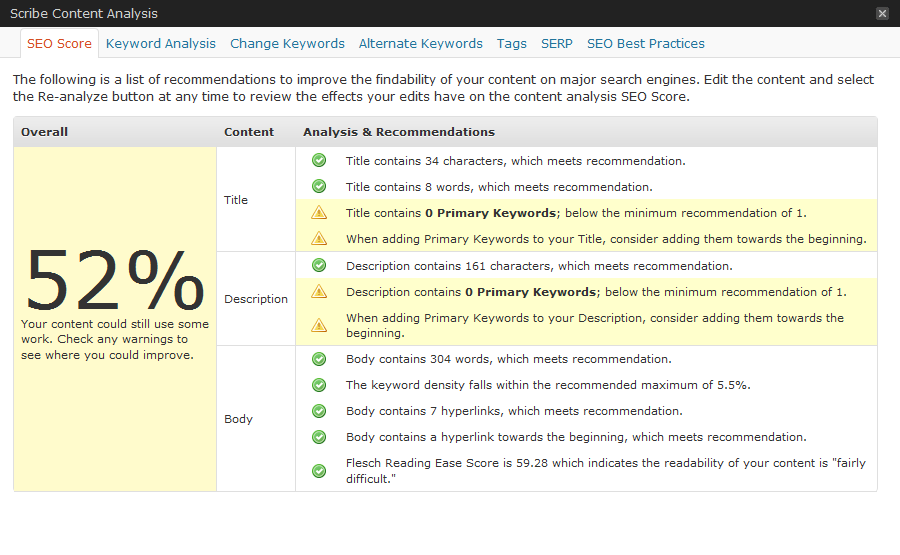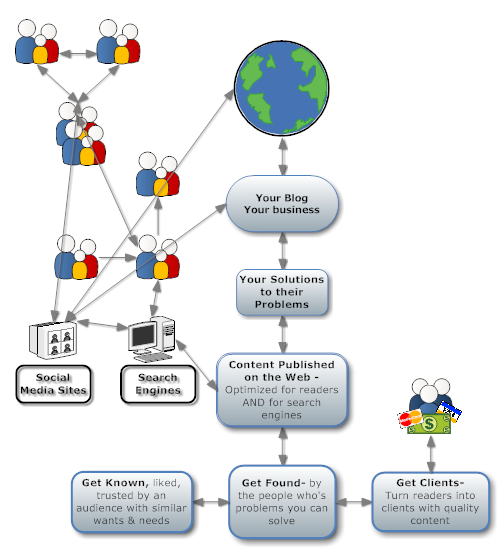 How do you know if your blog posts are optimized for search engines?
How do you know if your blog posts are optimized for search engines?
Good question… and no easy answer… well, except for one which I’m going to share with you here! Here are a few options for optimizing your content for search marketing:
- Study Google and search engine optimization (time-consuming)
- Hire an SEO person to do some optimization for your web content (expensive)
- Become a subscriber to a service called Scribe Content Optimizer (easy, instant & affordable)
Here’s how it works. You go here, you sign up, you install it to your WordPress blog. You start using a free plug in called All-in-One SEO Pack.
You write a blog post, you fill in the information on the SEO plug in, you click the Scribe analyze button, wait a few seconds and get a review of how well your content will do with search engines. You then get a list of things you can do to raise your search engine optimization score.
Okay, seeing is better than me telling you. Here’s a snapshot of a blog post that didn’t score well, and here’s one that got a perfect score. You can see for yourself that the Scribe report tells me what I can do to raise my score, to improve my search engine optimization.
 And here is a screen capture of a post that got a perfect score: Read More→
And here is a screen capture of a post that got a perfect score: Read More→












